The Pomo Culture and their Baskets
Pomo, Greg Sarris- “[B]askets…have stories, songs and genealogies. They have helped us on our travels and told us who we are as a people. They have healed the sick and forecast momentous events. The weaver’s hands move, and the basket takes form so that the story can be known. And the baskets keep talking.[1]
THE POMO CULTURES
The Pomo is a name for between five and seven different Native American groups with similar cultures but very different languages. The languages of the Pomo groups were mutually unintelligible and more different than the Germanic languages (such as English, German, Danish, Dutch, Norwegian and Icelandic). These groups are referred to as the Northern, North Eastern, Central, Southern, Kashaya and sometimes the South Eastern and Eastern.[8][9]
The Pomo live around the Russian River in two different ecozones: the coastal redwoods and the valley foothills.
The coastal region is separated from the valley by coastal redwoods and the Russian River. It is the less favorable of the two ecozones because the eroded beach line is restricted in the number of edible plants and animals available. The Pomo in the coastal region get most of their food from the ocean, the redwoods, rivers and streams. They eat fish, shellfish, snails, seaweed, sea lions, salt, deer, elk, small mammals and mussels. In the spring and early summer they gather seeds and in the fall they gather bulbs, berries and roots. When hunting sea lions the coastal dwelling Pomo make rafts from driftwood and float out to the islands that the sea lions rest on.
The coastal dwelling Pomo live in permanent villages and seasonal campsites. The permanent villages are located more inland and have greater populations then the villages closer to the coast. Most of the coastal Pomo villages are on the alluvial mouth of the Russian River. The temperatures reach 80 degrees in the summer and the yearly rainfall is between 40 and 50 inches.
The valley foothill region is farther inland and is characterized by oak trees, small valleys and rolling hills. In the summer the temperatures can reach 100 degrees and the winters are mild reaching 50 or 60 degrees during the day. The average rainfall is between 30 and 40 inches a year. For the Pomo living in this ecozone the acorn is the primary food source. They also eat fish, deer, rabbits and other small mammals.[9]
The Pomo live in village communities that own a tract of land. This ownership is recognized by the neighboring villages. The size of the village was simply determined by how much food could be accessed by the village, but villages ranged from 125 to 1500 people. Ownership of food sources was either communal or controlled by a single family.[8]
BASKETRY OF THE POMO
Pomo burden baskets
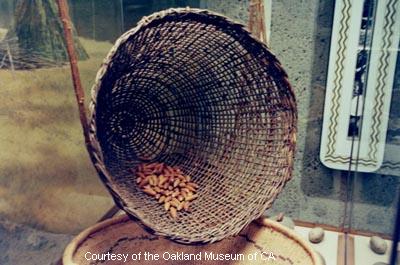
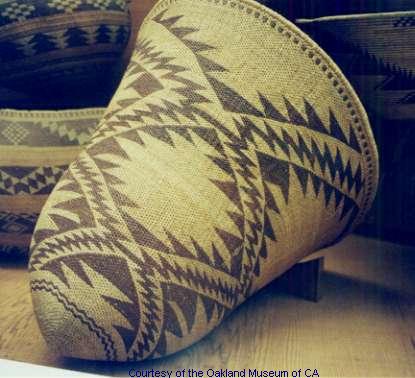
Hopper to facilitate grinding acorns.
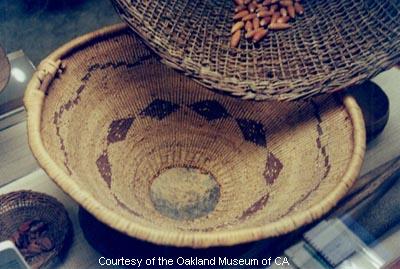
A sifting basket.
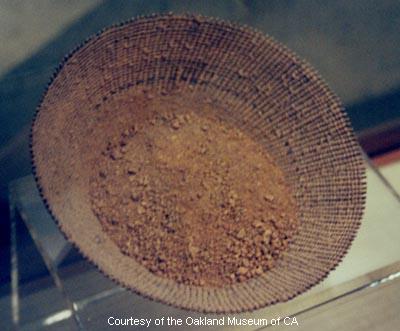
A doctor's basket used to hold a curing outfit.
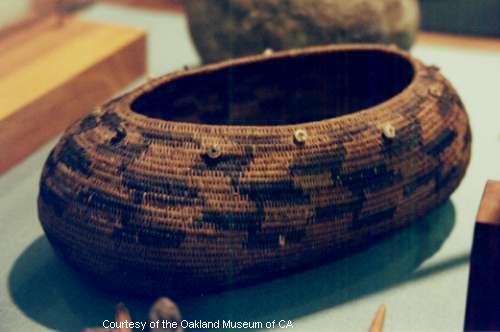
A Pomo plaque.
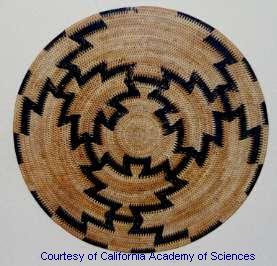
Fish trap: One basket is inside of another. The inner basket has a hole in the center. The fish swim in the first and get caught in the second basket.
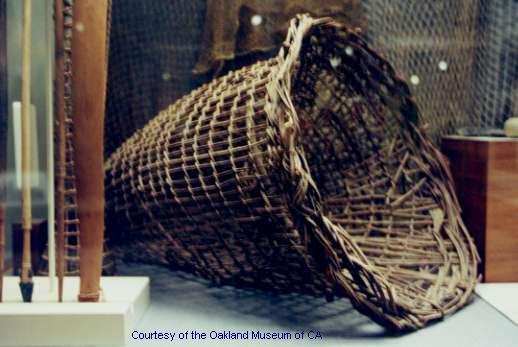
An eel trap.
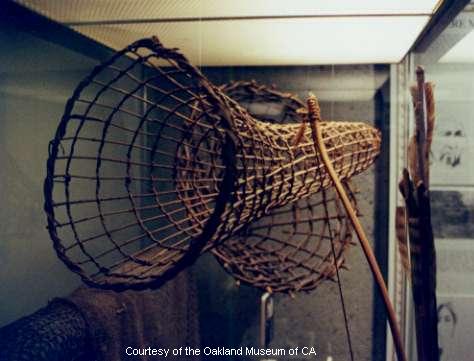
The start of a twined basket (left), the start of a twined basket (center) and the start of a basket using feathers (right). There are also two bone awls.
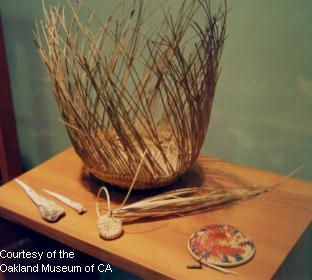
A mini Pomo basket that's about a centimeter tall.
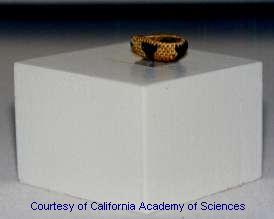
The baskets that the Pomo are known for - their gift baskets.
A coiled basket made with clamshell beads.
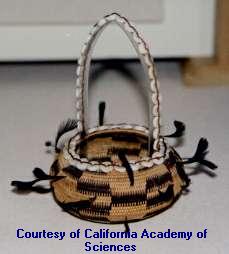
A coiled gift basket with feathers woven into it.
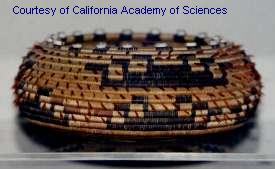
Highly decorated gift basket.
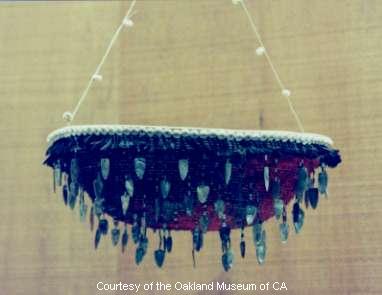
Gift basket decorated with clamshell disk beads and abalone pendants.
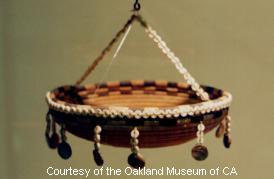
Gift basket decorated with feathers from the neck of mallard ducks and meadowlark.
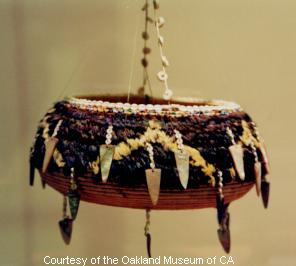
European influence in the handle. A traditional Pomo basket would never have a handle because it did not serve a purpose.
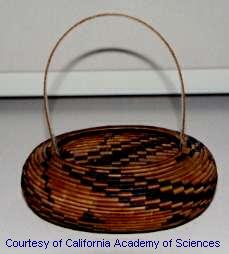
Negative image of lightning in the design.
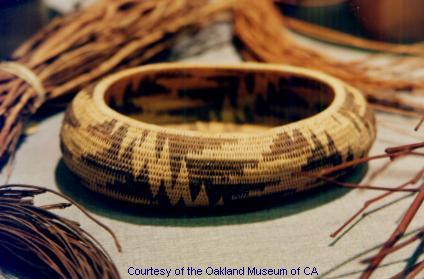
More Pomo basketry pictures
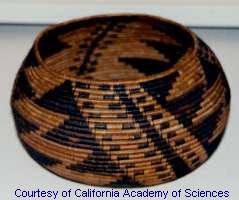
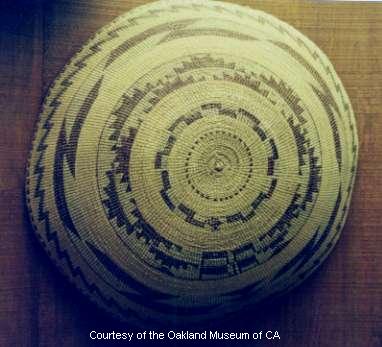
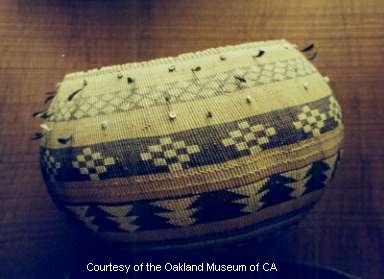
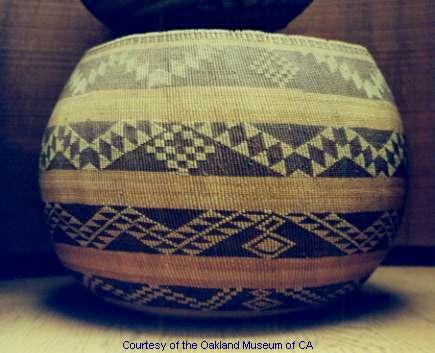
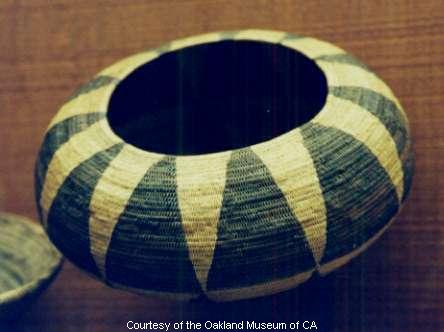
Background image courtesy of Agua Caliente Cultural Museum.




















